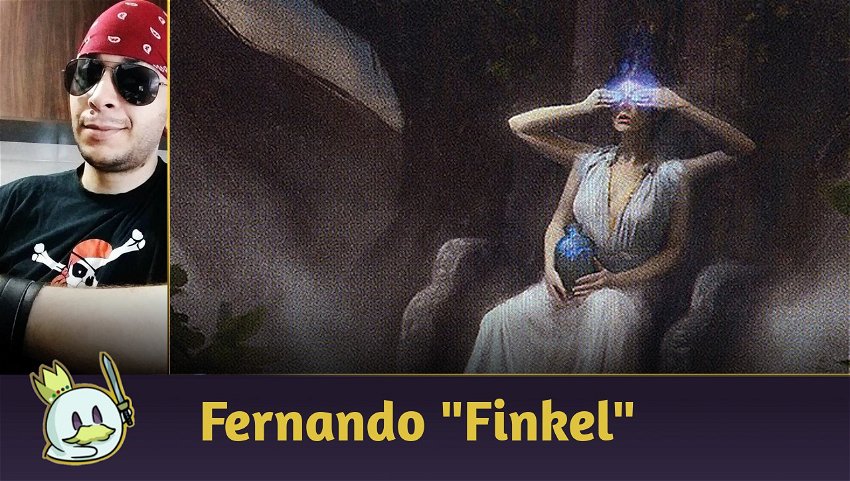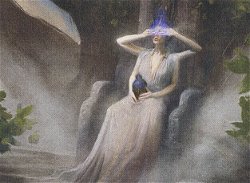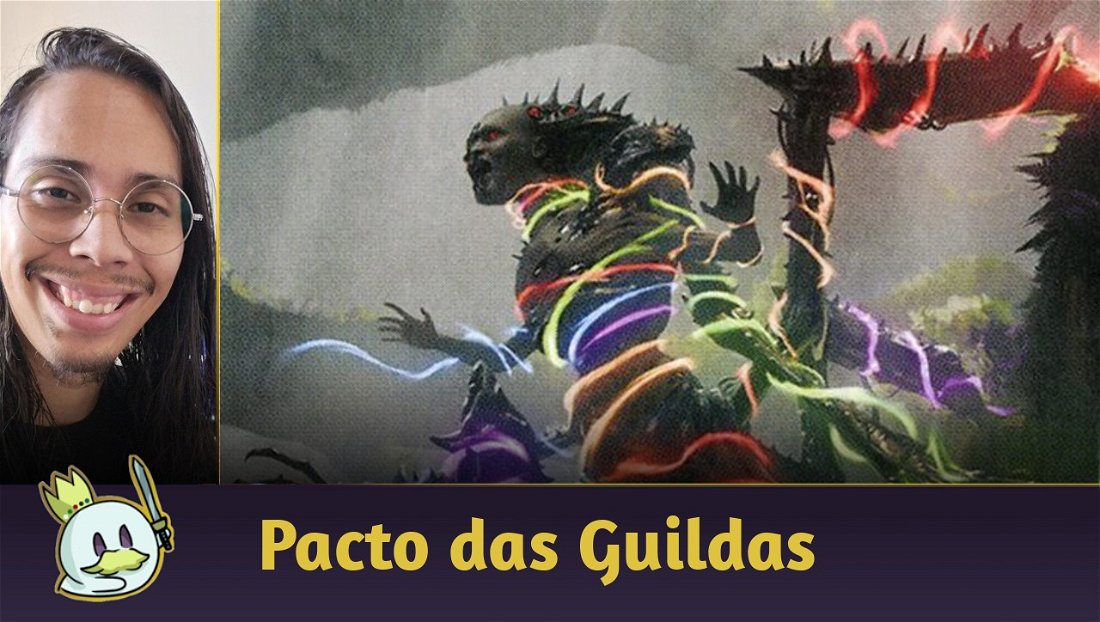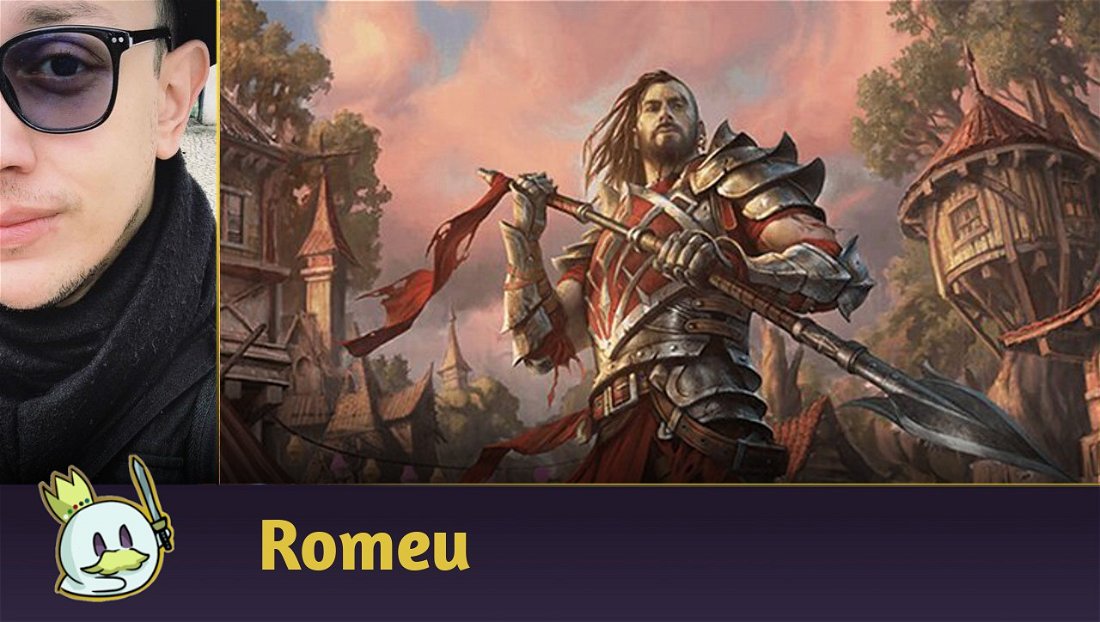Introduction
In my last article, we drafted a strategy which abandoned the Voting cards. However, I still kept thinking "these cards are too good to be abandoned this way, so I'll find a fun, dynamic way to reuse them".
So, we're here to draft a deck which will use the Voting mechanics, focusing on establishing a consistent strategy which uses negotiations and politics during your matches.
Mechanics, Colors and Commanders
As we develop our goal, we'll use the mechanics Will of the Council, Council's Dilemma and Secret Council, which are present in the cards that activate the Voting effect to all players. However, we'll always try to influence enemy players' choices, so that the player who is using this deck is always ahead strategically when using these mechanics. We even have some great examples:

Considering the color of the cards which are aligned with this deck's goals, we then defined we'll use the 4 colors 



This way, we set out to define our commanders. We'll use two commanders with the Partner mechanic, which are:


Now, let's individually observe each commander to understand why they were chosen and what is their connection to our strategy.
Evidently, these cards have no effect connected to the Voting goal, but they offer support and acceleration abilities which are very promising for our strategy. With Tymna the Weaver, we add to battles the advantage of card draw, because every time an opponent is dealt damage during the turns we go to combat, we'll be able to draw additional cards for each opponent who suffered damage.
As for Kydele, Chosen of Kruphix, it works as a mana generation engine, because, for each card drawn in the turn its ability is activated, it will proportionally add colorless mana, this way allowing us to make more plays or use cards with higher mana costs.
This way, both commanders form a very synergistic duo. Two fundamental factors are evident to our strategy here: card draw and mana generation, which are our two basic roles for this decklist to work properly.
Build and Deck Packages
In this topic, we'll draft our deck's build and development. We'll observe the mechanics used step by step, and also observe some of the main cards which will place our deck on the battlefield on its way to victory.
Acceleration
In all decks which have 

You can see that cards above, in their total, have as focus looking for lands of specific types, which allow us to correct the mana curve by looking for lands such as Breeding Pool, Temple Garden, Indatha Triome and Spara's Headquarters. This way, we determine the colors we need to carry on with our possible plays according to the cards we have in hand.
However, we know that a 4 color deck can't just count on green to guarantee its assertiveness when the matter is the mana curve, and that is why we'll use artifacts which create mana:

The options are increasingly varied, and we can even let go of green cards to amplify the artifacts in this type of strategy - that will be up to the player's criteria at the moment they build this deck.
Regarding mana artifact options, we'll highlight Model of Unity, which in turn has great synergy with this strategy, not only as it is a mana generator, but also as it works consequently to Voting effects, triggering Scry every time a Vote is done.
Voting
The peak of our strategy is the use of negotiation and political plays during the match. For that reason, we'll use cards with the voting effect, always looking to extract the most out of it and influence players to decide votes in our favor, or creating situations in which the vote cast doesn't matter, because the advantage will always be ours.
For that reason, we'll observe cards which first create objective advantages after the voting effect, opening up opportunities in the match:

In the options listed above, we'll see the mechanic Council's Dilemma presents itself in a pattern which indeed creates a dilemma in the match, in which opponents will have to make tough choices which can determine very favorable results for the one who is controlling this deck.
Further on, we'll observe Voting cards which create resources or directly influence resources in the match:

It's evident Will of the Council creates openings for many different choices, which are even balanced in some way for players in the match. However, in this case, we open up space for negotiations during plays, and we alter players' decisions.
We also count with some cards which aim at affecting decisions to tilt the votes in favor of the player who is controlling this deck:

Ballot Broker, Brago's Representative e Tivit, Seller of Secrets have as an effect increasing the number of votes of the player who controls this deck, creating the opportunity of manipulating this advantage to your favor. On the other side, we see that Model of Unity and Erestor of the Council already work in a way that offers benefits to players who agree to vote in agreement with this deck's controller, this way creating possible negotiations throughout the match.
We also have Secret Council, which is similar to the previous mechanics, with the exception that choices during Votes are secret - which means, no one will know what each player will choose, but there's always space to negotiate in a fun way during effects such as:

When we analyze these Voting effects, we can see that the consequences are very interesting and have good synergy with the cards that add an extra vote for the player who controls this deck.
When We Enter The Battlefield
Many creatures used in this deck have the triggered ability "enters the battlefield" (ETB), both the ones which have the Voting mechanic and the others which present themselves as good support options or even win conditions. This way, we'll list in this topic cards which are important pieces with this ability, or cards which have high synergy in a way that strengthens our strategy.
We have Eternal Witness, which is a great recursion option, Druid of Purification, as a strong removal, and Wood Elves, which is a suitable option for land acceleration.

Besides that, we count with Atraxa, Grand Unifier as one of the strongest cards in this theme of colors, both due to its effect when entering the battlefield, and for its structure as a 7/7 creature, and as it has a threatening arsenal of static abilities. It is also a possible alternative commander, which, when it replaces the current commander, we'd strategically alter this deck, so we can take better advantage of all the power Atraxa in the command zone can offer.
Furthermore, let's note a few different cards which reinforce the ability analyzed in this topic, such as:

All these cards have, by default, the focus on relapsing triggered abilities, be it by doubling the ability or creating the effect of removing its permanent and bringing it back again onto the battlefield, creating stability for our strategy.
The Decklist
After we've explored the explanation throughout the Deckbuilding topic, we can observe we have, as a result, a Midrange strategic deck, which means, it develops gradually by alternating between activating effects with creatures and playing control spells to create numerous synergies. In this case, we'll take advantage of the Voting mechanic to establish an interactive gameplay pattern with the other players and create opportunities to have access to an array of plays. We'll be building a battlefield with many lands, functional creatures and good opportunities to control the board and fight other creatures.
Seeing the Strategy in Action!
Based on using the commanders Kydele, Chosen of Kruphix and Tymna the Weaver, we can observe both have great synergy with the deck, particularly in plays related to card draw, such as, for instance:

This deck counts with varied creatures which can amplify the possibilities on the battlefield throughout the match in different ways, such as using Sidar Kondo of Jamuraa for combat evasion, and Breena, the Demagogue to create advantages, be it by attacking, or avoiding opponents' attacks due to its effect. This way, we'll create small fights which give us gradual advantages, without antagonizing our opponents, and we'll manipulate the game to our favor.
This list tries to gain time, be it by accelerating lands, drawing cards, or negotiating advantages and disadvantages. As a result, Illusion of Choice is one of the cards which steals the spotlight, because it creates a significant advantage alongside Voting. In this strategy, we have a very cunning play when we use:

This way, we can control all votes during a turn, establishing great advantages, going around other players' right to vote, and even being able to finish the game by using Selvala's Stampede and Expropriate.
We must highlight Isochron Scepter isn't useful only for this play, as it also has great synergy with the other cards in this deck, such as:

To finish the game, after we have gained time and made careful decisions, we can finish the match with:

Or play an alternative combo with the following combined cards:


Budget Version - Kydele and Tymna
This deck in its budget version is a bit of a challenge, as the main cards for this deck's theme are very expensive and valuable, such as:

Therefore, when you're editing your Budget version, if you compare the list, you'll notice lands, artifacts, land searching spells and support effects were slightly altered. Obviously, it's always up to the player who'll use this deck to study the best way to build it and the best card options, which is why I always recommend you thoroughly research the cards that best fit your situation.
Final Words
Developing new decks with different context is always a challenge. For this goal, we mixed up risky and interactive plays throughout the match, focusing on social interaction with players.
There are always very different people during our multiplayer matches, and this deck might not be attractive to people who are more shy, due to all the negotiating this strategy forces on you. It encourages constant debates, expecting you to speak, question and proposition deals with the others - but, unquestionably, I strongly recommend you take this type of opportunity, because it is very good to be able to interact with our partners and possible Magic friends!
Now it's up to you! Did you like this article? What's your favorite play here? Do you agree with this deck tech? Would you do something different, perhaps even more innovative? Don't forget to leave your comments, critiques, suggestions and opinions down below, so we can keep on growing and learning together.
See you soon!















— Kommentare 0
, Reaktionen 1
Sei der erste der kommentiert